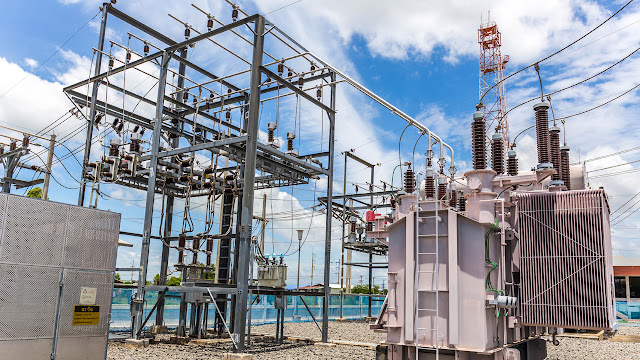Example: Single Line-to-Ground Fault Calculation
The single line-to-ground fault on a transmission line happens when one conductor accidentally to the ground or comes in some cases in contact with the neutral conductor. For this reason, the protective devices of a power system needs to be accurately responsive to avoid severe damage in the system.
See Unbalanced Fault Analysis: Single Line to Ground Fault
Indeed, it is very important to know the procedure of single line to ground fault calculation.
Related articles:
- Double Line to Ground Fault
- Line to line fault
- Symmetrical three phase fault
Example:
Assumed that the generator below is solidly grounded and neglect the fault impedance. Determine the phase currents and phase voltage at faulted location.
 |
| Generator |
Solution:
Compute the base value:
Choose: Sb = 20 MVA and kVb = 13.8 kV
then,
Ea = 20 MVA/ 20 MVA = 1 (angle 0) per unit.
Ibase = 20 MVA / (1.73 x 13.8 kV)
Ibase = 0.837 kA
Develop positive sequence network:
 |
| System Positive- Sequence Network Equivalent |
where,
- Ea = the generator EMF, which has a value of 1 (angle 0) per unit.
- Xd" = the positive sequence impedance of transformer (in subtransient state)
- If-1 = positive sequence current.
 |
| System Negative- Sequence Network Equivalent |
where,
- If-2 = negative sequence current
- X2 = negative sequence reactance
Develop zero sequence network:
 |
| System Zero-Sequence Network Equivalent |
- If-0 = zero sequence current
- X2 = zero sequence reactance
then, If-1 = 1 (angle 0)/ (Z0 + Z1 + Z2) = -j 2.22 pu or 2.22 (angle -90)
also it means that, If-2 = If-0 = - j 2.22 pu
Multiplying the base value
Ibase = 0.837 kA
then, If-1 = 2.22 (angle -90) * (0.837 kA) = 1.86 kA (angle -90) --> actual value
Since all sequence currents are equal, thus:
- If-1 = 1.86 kA (angle -90) --> + S
- If-2 = 1.86 kA (angle -90) --> -S
- If-0 = 1.86 kA (angle -90) --> 0S
Applying the formula of sequence to phase values matrix we can get:
- Fault current at A = 5.58 kA (angle -90 degrees)
- Fault current at B = 0
- Fault current at C = 0
The zero values of phases B and C confirmed that no fault current flows from it during fault condition.
Computing Voltage at the faulted point,
Looking at this diagram, the voltage values of the un-faulted phases (phase B and C) are the only one that has a value while phase A (the faulted phase), its voltage is equal to zero (neglecting impedance).
Thus,
Computing Voltage at the faulted point,
Looking at this diagram, the voltage values of the un-faulted phases (phase B and C) are the only one that has a value while phase A (the faulted phase), its voltage is equal to zero (neglecting impedance).
Thus,
- Voltage at phase A = 0
- Voltage at phase B = Vb
- Voltage at phase C = Vc.
Analyzing positive sequence network equivalent,
- Vf-1 = 1 (angle 0) - (If-1) * (Z1) = 1 - (-j 2.22) (j 0.25) = 0.445 (angle 0) (+ sequence voltage)
Analyzing negative sequence network equivalent,
- Vf-2 = 0 - (If2) * (Z2) = 0- (-j2.22) * (j0.1) = 0.222 (angle 180) ( neg. sequence voltage).
Analyzing zero sequence network equivalent,
- Vf-0 = 0 - (If-0)* (Z0) = 0- (-j 2.22) * (j0.1) = 0.222 (angle 180) (zero sequence voltage).
Applying the formula of sequence to phase values matrix we can get:
- Voltage at phase A = 0
- Voltage at phase B = 0.667 (angle -120) pu
- Voltage at phase C = 0.667 (angle 120) pu
Applying base value,
Vbase = 13.8 kV/ 1.73
Therefore, the actual values of phase voltages are,
- Voltage at phase A = 0
- Voltage at phase B = 5.31 kV (angle -120)
- Voltage at phase C = 5.31 kV (angle 120)



.webp)










